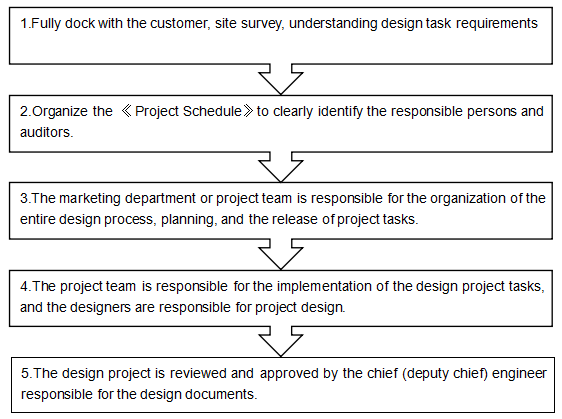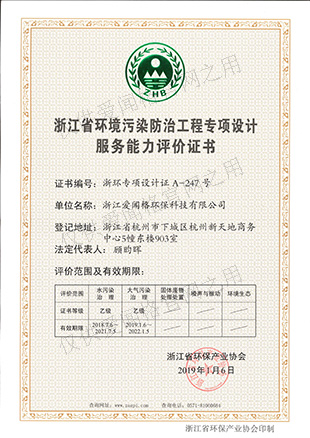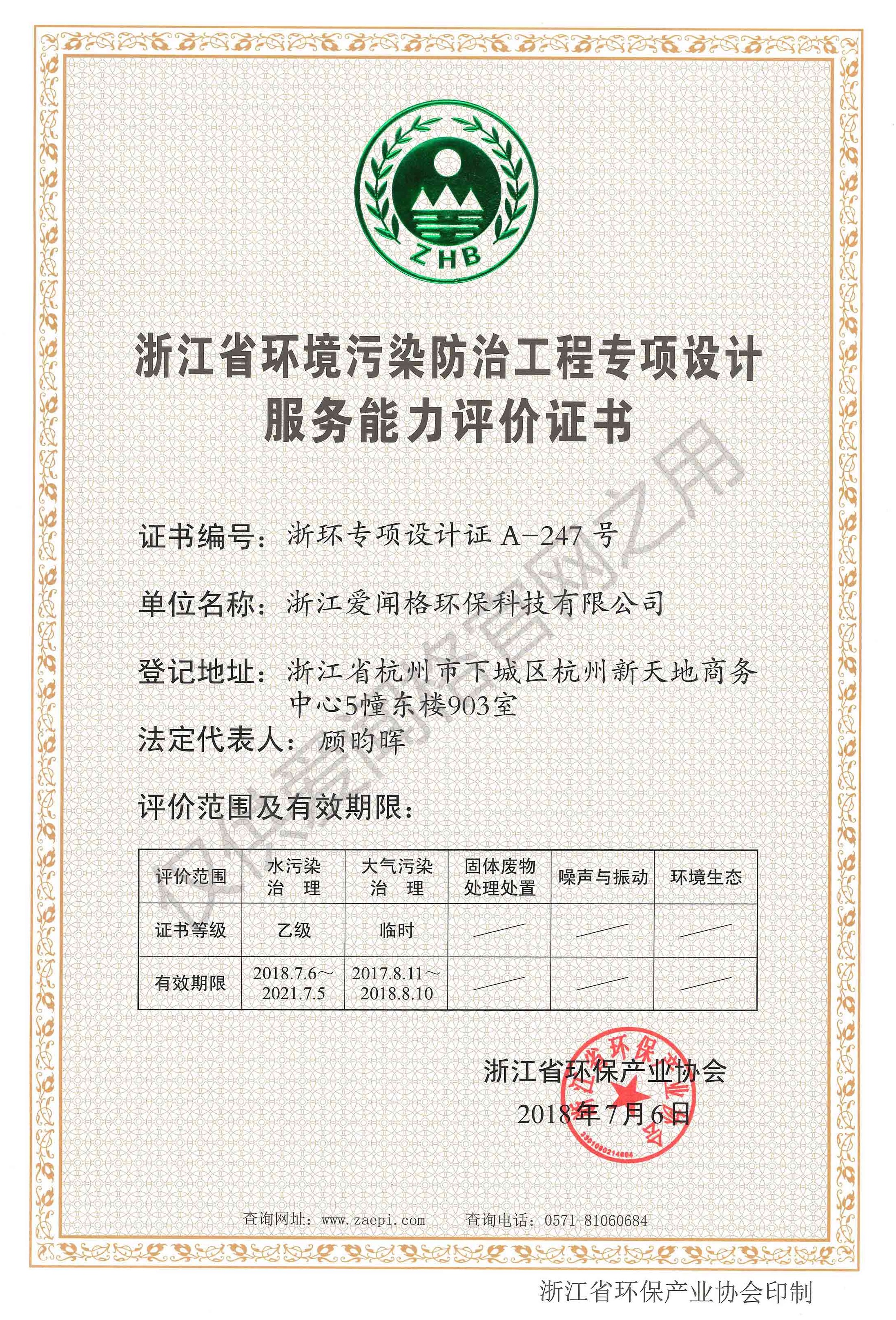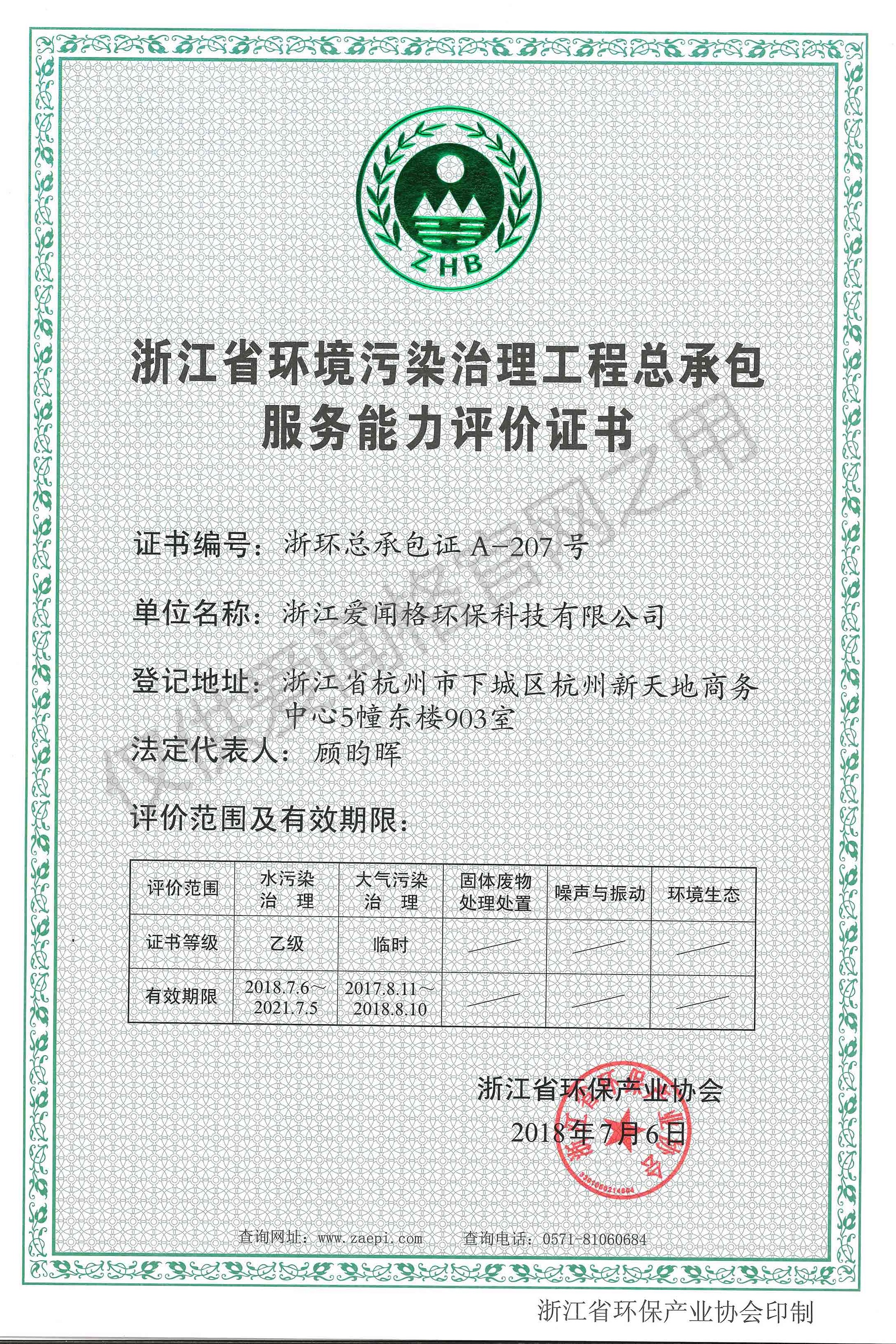一、Engineering Design:
The company and the company's expert database have a large number of high-level experts with practical experience in environmental engineering, covering almost all aspects of soil remediation, atmospheric pollution control, sewage treatment, solid waste disposal, etc..
The company has environmental protection engineering design qualifications and can provide design and technical services for air pollution control, sewage treatment, soil remediation, solid waste disposal and other environmental protection projects. The company has provided excellent services for many companies since its establishment.

二、Project General Contracting:
The company has general environmental protection project contracting qualifications, and the company and the company's expert database have a large number of high-level experts with practical experience in environmental engineering, covering almost all aspects of soil remediation, atmospheric pollution control, sewage treatment, solid waste disposal, etc.Environmental protection projects such as pollution control, sewage control, soil remediation, and solid waste disposal are generally contracted.
1、General Principles of Engineering Quality:carefully planned, active innovation, strict management, civilization Construction.
2、Total Project Quality Goals:One-time pass rate of engineering acceptance is one hundred percent.
(1) All projects meet the current construction quality acceptance standards and meet the design requirements;
(2) Prevent major quality accidents in construction;
(3) The acceptance rate of the project, branch and unit project acceptance reaches one hundred percent;
(4) Engineering environmental protection standards;
(5) Completion documents are compiled according to regulations, all kinds of data are valid and complete, and one acceptance check is achieved.
三、 Comprehensive treatment technology for soil pollution:
▲Heavy Metal Contaminated Soil Stabilization/solidify solidification Technology
▲Heavy metal contaminated soil washing technology
▲Volatile Organic Polluted Soil Enhanced Gas-phase Extraction Technology
▲Semi-volatile organic contaminated soil biopiler processing technology
▲Advanced Oxidation Technology of Organic Polluted Soil
▲Diffusion solvent contamination site multiphase extraction technology
▲Organic matter contaminated soil in situ heat treatment technology
▲In-situ Chemical Oxidation/Reduction of Organic Polluted Soil
▲In-situ enhanced bioremediation of organic pollutant-contaminated soil
▲Ectopic Thermal Desorption of Organic Contaminated Soil with High Concentration
▲Zero-valent iron repair technology
▲Electric repair technology
▲Groundwater extraction technology
▲Groundwater permeation reaction grid technology
▲Abandoned mine repair technology
▲Farmland Pollution Comprehensive Treatment Technology
四、Emission control of VOCs:
The main content of VOCs emission control consultation is to provide all aspects of technical VOCs emission control services, tailored to VOCs emission reduction programs.
Combating VOCs emission source terms:
According to the characteristics of the industry, combined with the actual situation of the enterprise, comprehensively touch and sort out VOCs emission sources, and provide objective data for the operating efficiency of pollution control facilities and pollution emission levels.
Fixed pollution source online monitoring:
Online monitoring of on-site VOCs from fixed sources, combined with VOCs emission source analysis, helps companies master VOCs emissions and control status.
Emission accounting:
In strict accordance with the accounting methods introduced by the national and local governments, according to the current state of VOC emissions control in enterprises, help companies to select appropriate calculation methods, accounting for VOC emissions, and provide constructive consulting advice for enterprises in the EIA, emission permits, pollution reduction, sewage charges and other work.
Emission Reduction Approach:
Based on the company's existing VOCs emission status, emission levels, analysis of emission reduction approaches from the source, process, end, etc., for the company to clarify the emission reduction links, technical methods and the main parameters.
Emission Reduction Performance Evaluation:
Analyze and evaluate the emission reductions and emission reduction benefits of various emission reduction measures and intensify the potential of enterprises' emission reduction.


Volatile Organic Compounds (VOCs) End Treatment Engineering
End of VOCs governance
Common techniques for the treatment of terminal VOCs include incineration, catalytic oxidation, adsorption, condensation, and liquid absorption.
Incineration
The incineration method is suitable for treating high-concentration and small-volume coating exhaust gas, and has high efficiency, simple structure, low equipment cost, and waste heat can be utilized. The incineration system consists of a burner, a combustion chamber and a heat exchanger. The gas containing the organic solvent is heated to 700 to 800 ° C to be directly burned and decomposed into carbon dioxide and water. The time for the exhaust gas to stay in the incineration chamber is 0.5 to 1.0s. The temperature of the incineration gas after the treatment of the furnace is high, and the heat energy can be recovered.
Common combustion techniques include RTO (regenerative thermal incineration) and TO (direct combustion thermal incineration).
Catalytic oxidation
The catalytic oxidation method differs from the incineration method in that platinum, cobalt, copper, nickel, or the like is used as a catalyst, and the exhaust gas is heated to a lower temperature of 200 to 500 ° C to achieve complete combustion. Catalytic oxidizers are characterized by the use of catalysts to significantly reduce the decomposition temperature of VOCs.
Common catalytic oxidation techniques include: RCO (regenerative thermal combustion), CO (catalytic oxidation), and the like.
Adsorption method
The principle of the adsorption method is that the gas passes through the adsorbent to adhere to the solid surface thereof, thereby achieving the purpose of removal.
Commonly used adsorbents are: activated carbon (granular activated carbon, fibrous activated carbon, etc.), zeolite, and the like.
Condensation method
The condensation treatment separates the easily condensable components by utilizing the difference in the condensation temperature in the exhaust gas components. Condensation can include two modes: (1) reducing the temperature of the system at constant pressure; (2) increasing the pressure of the system at a constant temperature. Among them, since the equipment required for pressurization is more and the operation cost is more expensive, the cooling method is generally used to achieve the purpose of condensation.
Liquid absorption method
The liquid absorption method is also called gas-liquid mass transfer absorption method, and the liquid is used as an absorbent to make harmful components of the exhaust gas be absorbed by the liquid, thereby achieving the purpose of purification.
Sludge reduction and resource utilization
Overview of sludge production and treatment
The dewatered sludge is composed of metabolized microbial corpses and adsorbates. When discharged, the water content is above 99%. After mechanical dehydration, it is soil-like, and the water content is still about 80%. The physical and chemical properties of municipal sludge are determined by the nature and treatment process of sewage. Since China uses domestic sewage and industrial wastewater in combination, the sludge composition is complex and the content of individual heavy metal elements is high. At present, China's urban sludge mainly adopts temporary landfill disposal methods, which not only occupy a large amount of land, but also cause damage to the ecological environment.
Sludge reduction and resource utilization technology
Our company adopts high temperature aerobic fermentation to treat dewatered sludge from municipal sewage treatment plants, which can stabilize, harmless and recycle sludge. The treated sludge can be used as a soil amendment and is the best sludge treatment technology recommended by the“Best Available Technical Guide for Pollution Control of Sludge Disposal in Municipal Wastewater Treatment Plants”. Specifically, it includes 4 stages.
Sludge pretreatment technology
Sludge pretreatment includes sludge storage, quantitative feeding; auxiliary material storage, quantitative feeding; sludge and auxiliary materials mixed and broken. The purpose of sludge pretreatment is to obtain a mixture that satisfies the fermentation process. We have independently developed a complete set of sludge pretreatment equipment, which can crush the dewatered sludge and different auxiliary materials. The crushed mixture meets the requirements of: the particle size is less than 20mm, the water content is about 60%, and it is loose.
Sludge high temperature aerobic fermentation
It is carried out by using microbial agents and fermentation equipment developed by ourselves. The main equipment is a multi-layer mobile floor fermentation warehouse, which is composed of several moving ground boxes. The box body pushes the materials through the orderly movement of the floor. The physical self-feeding to the discharge stroke track is S-shaped, minimizing the land occupation. The area is suitable for small sewage plants that are scattered and suitable for sludge treatment of large sewage treatment.
Advantages of vertical mobile floor fermentation tank: small footprint; less civil engineering; equipmentization and sealing of fermentation warehouse; can be transported to the site after processing in the factory; the construction period is short. The interior of the fermentation tank is designed by a special air pipe, and the oxygen supply of the pile is sufficient and uniform.
Post-fermentation sludge composting
The mash is placed in a sludge that is stable after fermentation. In the course of its life activities, it promotes the decomposition, transformation and C and N cycles of organic matter through the mechanical grinding of the gizzard in the body and the synergy of microorganisms in and out of the body. Produce manure and form organic fertilizer.
Land use of earthworm compost
Earthworm organic fertilizer is called "the king of organic fertilizer". First of all, the nutrients of earthworm fecal organic fertilizer are very comprehensive, and the nitrogen and phosphorous potassium elements are all contained, and the content of humus and organic matter is very high, and there are abundant microbial communities. It can be used to improve the pellet structure of the soil, so that the soil is loose, more plant growth; It can also retain soil moisture and lock in nutrients. It can also enhance the respiration and circulation of soil and enhance the life activities of microorganisms. Next, the biological activity of wormcast organic fertilizer is very high, after its application, the activity of soil will be driven up, the flow of the various elements will exacerbate, makes the soil can't use the original nutrients is driven up, involved in plant growth and development. Finally, it is very important that earthworm manure organic fertilizer is not harmful to plants, people and livestock and belongs to natural products.
Industrial wastewater treatment technology
Service area
▲Chemical wastewater
▲Textile, printing and dyeing industry wastewater
▲Biopharmaceutical wastewater
▲Photovoltaic wastewater
▲Wastewater for electronics, automotive and electroplating industries
▲Food, slaughter industry wastewater
▲Other related industry wastewater
▲Semiconductor industry wastewater
Governing equipment technical measures
▲Traditional physical and biochemical treatment technology
▲MBR membrane treatment technology
▲RO reverse osmosis technology
▲Deep well aeration technology
▲Ecological pond and constructed wetland technology for factory exhaust
▲Anaerobic wastewater treatment technology
▲Advanced catalytic oxidation technology
▲Ultrapure water preparation
▲Advanced treatment and reuse technology of wastewater
Technical advantages
▲The source has rich experience in reducing emissions, classifying and collecting waste water in the workshop, organically combining sewage treatment and resource recycling to ensure environmental and economic benefits
▲With strong scientific research strength and a large number of engineering practice experience, with a small test and pilot test base
▲For special industrial wastewater, the treatment plan is based on scientific analysis and system test to ensure that the effluent is stable and the process is optimal
▲"Scientific research, testing, design, construction, commissioning, environmental protection acceptance, after-sales service" one-stop environmental protection services

